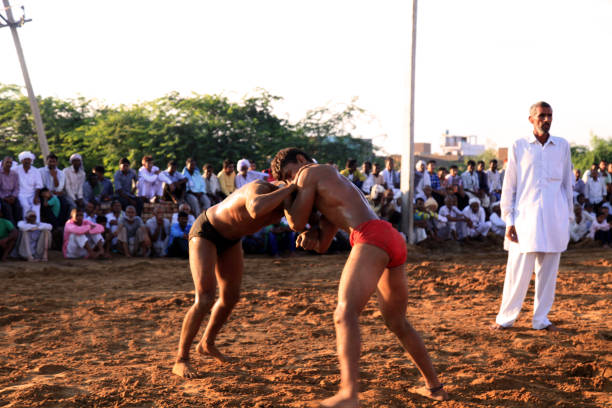General Rules of Sanshou Sport
You might think that the rules of Sanshou sport are too complex to understand, but fear not. Let's break it down for you. From scoring systems to prohibited techniques and everything in between, these guidelines ensure fair and safe competition. Ever wondered how weight classes impact the dynamics of the sport or what training tips can give you the edge in the ring? Stay tuned to uncover the essential elements that shape the Sanshou experience.
Scoring System
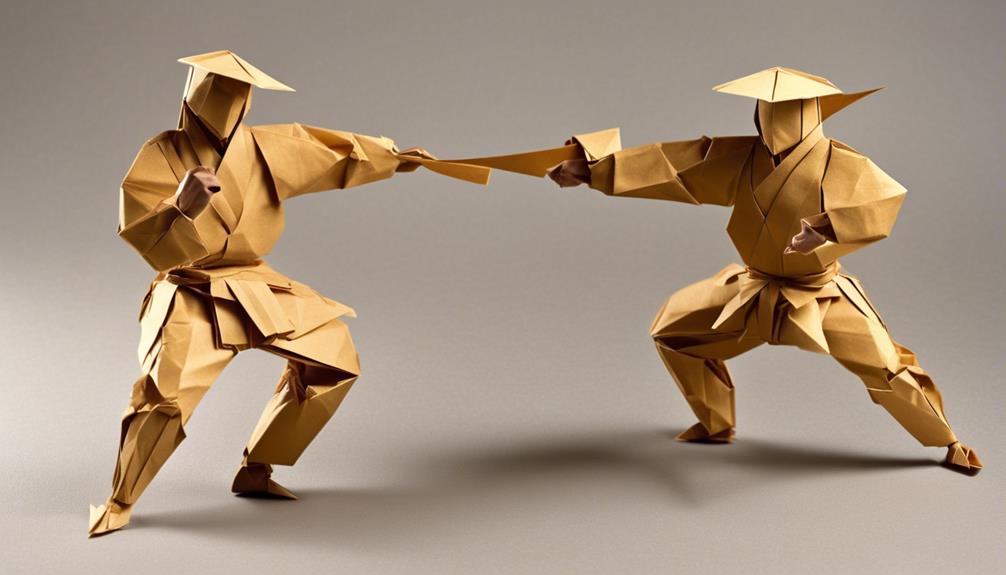
In Sanshou sport, the scoring system determines the outcome of a match based on points earned through effective strikes and techniques. The scoring criteria in Sanshou are crucial, as they rely heavily on judging accuracy to ensure fairness. Judges assess each strike, looking not only at the power behind it but also at the precision and skill demonstrated in its execution. Therefore, understanding the scoring system is essential for any Sanshou competitor.
Fight strategy plays a significant role in accumulating points in Sanshou. Simply throwing punches and kicks aimlessly won't earn you many points. Instead, fighters must focus on tactical execution, combining offensive techniques with defensive maneuvers to outmaneuver their opponents. Feints, counters, and well-timed strikes all contribute to a higher score. It's not just about landing hits; it's about landing them effectively and with finesse.
To excel in Sanshou, you must master the art of scoring points through strategic and skillful fighting. It's not enough to be aggressive; you must be calculated and precise in your approach. By understanding the scoring criteria and focusing on tactical execution, you can elevate your performance and increase your chances of success in the ring. Remember, in Sanshou, it's not always about how hard you hit but rather how skillfully you can outmaneuver your opponent to earn those crucial points.
Weight Classes
Understanding the weight classes in Sanshou sport is crucial for competitors as it directly impacts the matchups and dynamics within the competition. Proper weight management, nutrition, conditioning, and strength training are essential aspects for athletes to compete effectively within their designated weight classes. Below is a table outlining the typical weight classes in Sanshou sport:
| Weight Class | Weight Range (in pounds) | Weight Range (in kilograms) |
|---|---|---|
| Strawweight | Below 115 | Below 52 |
| Flyweight | 115 – 125 | 52 – 57 |
| Bantamweight | 125 – 135 | 57 – 61 |
| Featherweight | 135 – 145 | 61 – 66 |
| Lightweight | 145 – 155 | 66 – 70 |
Competitors must ensure they fall within the specified weight range for their chosen weight class through effective weight management techniques. This includes maintaining a balanced diet rich in nutrients to support their training regimen. Conditioning and strength training are also crucial to ensure that athletes can perform at their peak within their weight class. By understanding and adhering to the weight classes, athletes can compete on a level playing field, making the competition fair and exciting for all participants.
Equipment Requirements

Essential for optimal performance in Sanshou sport, adhering to specific equipment requirements is vital for competitors aiming to excel in their matches. Proper equipment maintenance is crucial to ensure safety during training and fights. Before every session, inspect your gloves, shin guards, and headgear for any signs of wear and tear. Ensuring that your gear is in top condition can prevent injuries and enhance your performance in the ring.
Safety precautions are paramount in Sanshou sport. Invest in high-quality protective equipment that fits you well to minimize the risk of injuries during intense training sessions. Your safety gear should be durable and provide adequate protection against strikes and falls. Remember, your equipment is your shield in combat, so treat it with care and respect.
To withstand the rigors of Sanshou training intensity, conditioning drills are essential. Incorporate exercises that focus on improving your strength, agility, and endurance. Running, strength training, and plyometric workouts can help you build the physical resilience needed for the demands of Sanshou competition. By consistently engaging in conditioning drills, you will enhance your overall performance and be better prepared for the challenges that lie ahead in the ring.
Legal Strikes
Let's talk about the POINTS in Sanshou sport, focusing on permitted striking techniques and the target areas for strikes. Understanding these aspects is crucial for executing effective strikes and scoring points during matches. Mastering the legal strikes will give you an edge in the ring and help you secure victory in Sanshou competitions.
Permitted Striking Techniques
When participating in Sanshou sport, it is important to be aware of the various permitted striking techniques, also known as legal strikes. These techniques include punches, kicks, and sweeps that can be used during a match. To enhance your striking abilities, it is recommended to focus on footwork drills to improve your agility and positioning in the ring. Additionally, incorporating heavy bag work into your training regimen can help you develop power and precision in your strikes. By practicing these permitted striking techniques diligently, you will be better equipped to execute them effectively during Sanshou competitions. Remember, mastering these techniques requires dedication and practice, so keep refining your skills to excel in the sport.
Target Areas for Strikes
To effectively target areas for legal strikes in Sanshou sport, understanding the key anatomical points on the opponent's body is crucial for strategic and precise execution. When aiming for legal strikes, keep in mind the following:
- Defensive Strategies: Recognize vulnerable spots on your body to anticipate your opponent's potential targets.
- Counter Attacks: Utilize quick reflexes to turn defense into offense, targeting your opponent's exposed areas.
- Footwork Techniques, Distance Control: Master footwork to maintain optimal striking distance, enabling you to land effective blows while avoiding your opponent's attacks.
Prohibited Techniques
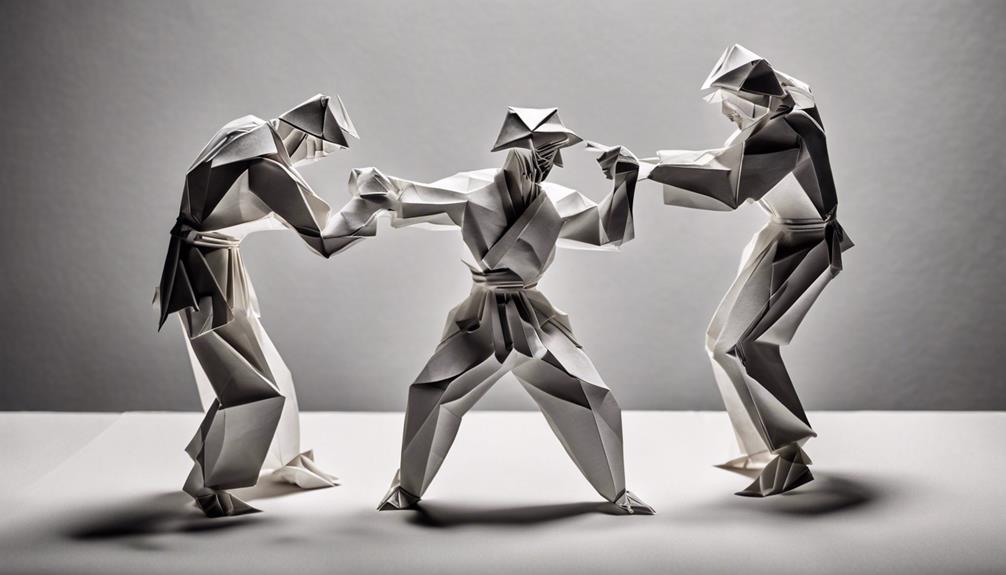
While competing in Sanshou sport, it is imperative to adhere to the list of prohibited techniques to ensure fair and safe gameplay. These rules are put in place not only to maintain the integrity of the sport but also to prioritize the safety of the competitors. Here is a breakdown of the prohibited techniques in Sanshou:
| Prohibited Techniques | Description | Reason |
|---|---|---|
| Eye Gouging | Deliberate striking or poking of the eyes | Prevent serious injury to the eyes |
| Groin Strikes | Targeting the groin area with kicks or punches | Protect sensitive and vulnerable area |
| Spinal Attacks | Direct strikes to the spine or back of the head | Avoid severe and lasting damage to the spine |
These techniques are strictly forbidden in Sanshou competitions as they can cause significant harm to the competitors. By enforcing these rules, Sanshou ensures that the focus remains on skill, strategy, and sportsmanship rather than on inflicting unnecessary harm. Remember, the essence of Sanshou lies in its blend of self-defense applications, training drills, martial arts philosophy, and competition strategies. Adhering to the prohibited techniques not only upholds the spirit of the sport but also fosters a safe and respectful environment for all participants.
Ring Regulations
Coming from the discussion on prohibited techniques in Sanshou sport, the focus now shifts to the essential guidelines governing the ring, known as Ring Regulations.
- Ring Dimensions and Fighter Attire: The ring, also known as the Sanshou platform, must adhere to specific dimensions to ensure a fair and safe competition. Typically, the ring is a square platform raised above the ground, with sides ranging from 7 to 10 meters. Additionally, fighters must wear appropriate attire, usually consisting of loose-fitting shorts and a tank top, allowing for freedom of movement during bouts.
- Cornerman Duties and Medical Check-Ups: Each fighter is allowed a cornerman, whose primary role is to provide guidance, support, and necessary assistance during breaks between rounds. They must also ensure the fighter's safety and well-being throughout the match. Moreover, before entering the ring, fighters undergo rigorous medical check-ups to confirm their physical fitness to compete. These check-ups are crucial in safeguarding the health of the athletes and maintaining the integrity of the sport.
Understanding and adhering to these Ring Regulations is crucial for a smooth and organized Sanshou competition. The rules regarding ring dimensions, fighter attire, cornerman duties, and medical check-ups are all put in place to create a safe and fair environment for all participants.
Match Duration
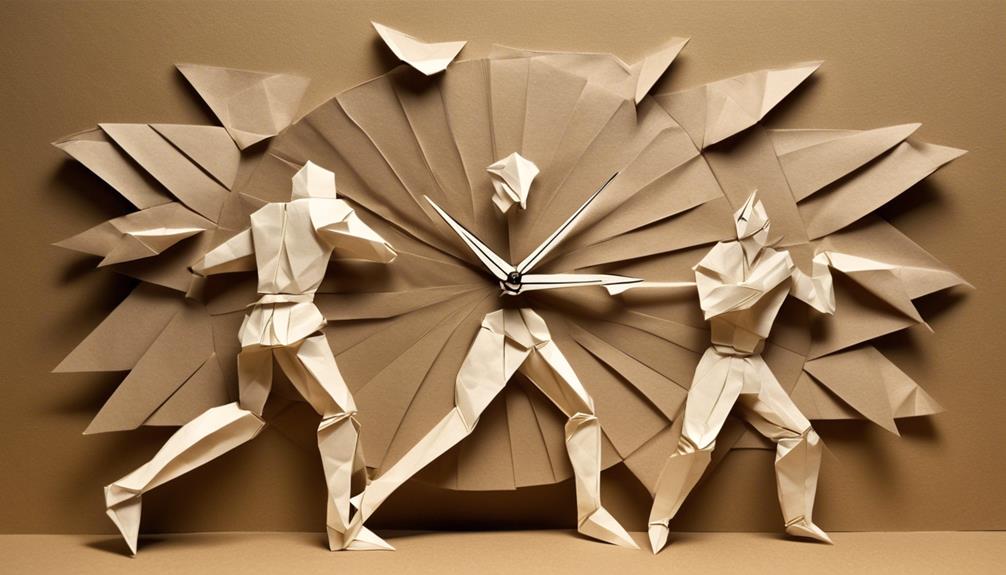
When it comes to Sanshou matches, understanding the time limits and overtime rules is crucial for strategizing your approach. The duration of a match can greatly impact your tactics and overall performance, so being aware of these regulations is key. Stay tuned to learn more about how time factors into the intensity of Sanshou competitions.
Time Limits
In Sanshou sport, each match typically lasts for a set amount of time, determined by specific rules and regulations. Understanding the time limits is crucial for both athletes and spectators to grasp the dynamics of the competition fully. Here are three key points to consider:
- Referee decisions: Referees play a vital role in ensuring that matches run smoothly within the designated time frame. Their decisions impact the flow and outcome of the bout.
- Athlete behavior: Athletes must manage their time effectively during a match, balancing offensive and defensive strategies to make the most of the allotted time.
- Match strategies, time management: Developing effective strategies and managing time wisely are essential for success in Sanshou sport, where every second counts.
Overtime Rules
Having a clear understanding of the time limits in Sanshou sport sets the foundation for comprehending the intensity of the matches; delving into the overtime rules further illuminates the intricacies of match duration. When facing overtime, having well-thought-out strategies and scoring tactics is crucial. Conditioning drills play a significant role in preparing for the physical demands of extended play, ensuring you can maintain peak performance. Mental preparation is equally important, as staying focused and composed during overtime can be the key to seizing victory. Below is a table outlining essential aspects to consider when dealing with overtime in Sanshou sport:
| Aspect | Importance |
|---|---|
| Overtime strategies | High |
| Scoring tactics | Critical |
| Conditioning drills | Essential |
| Mental preparation | Crucial |
Referee Authority
The referee's authority in Sanshou sport is paramount, ensuring the fair and safe conduct of matches. When it comes to referee decisions and athlete conduct, here are three key points to keep in mind:
- Enforcement of Rules: Referees hold the responsibility of enforcing the rules of Sanshou sport during matches. They must ensure that all athletes adhere to the regulations set forth for fair play and safety. Any violations or infractions are promptly addressed by the referee to maintain the integrity of the competition.
- Ensuring Fairness: Referees play a crucial role in ensuring fairness throughout the match. They must remain unbiased and make decisions based on what they observe, without favoring any particular athlete. By upholding impartiality, referees contribute to the credibility of the sport and create a level playing field for all competitors.
- Maintaining Safety: The safety of the athletes is of utmost importance, and referees are tasked with prioritizing this aspect during matches. They must intervene if they perceive any actions that could endanger the well-being of the competitors. Referees have the authority to stop the match if necessary to prevent any potential harm, showcasing their commitment to the welfare of the athletes.
Judging Criteria
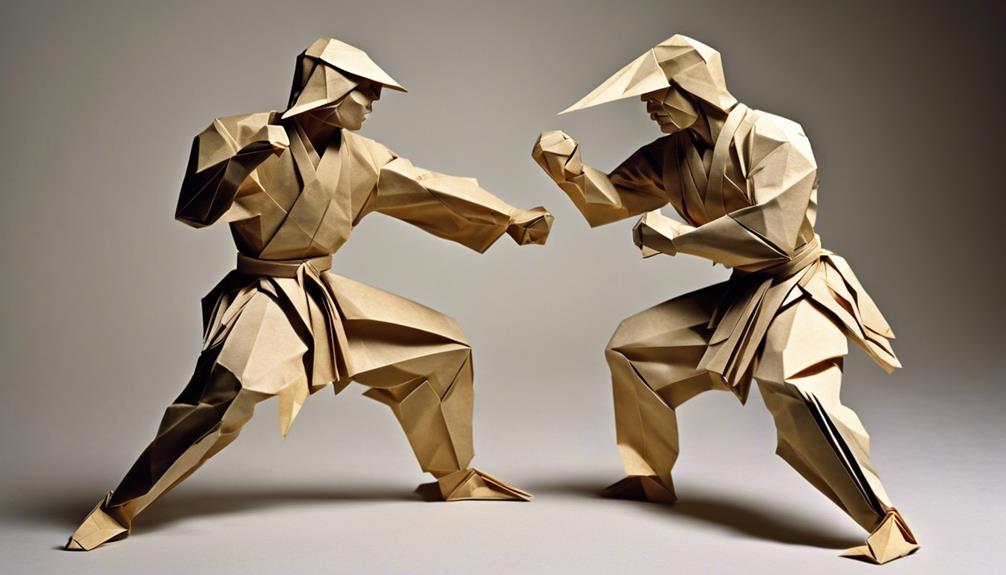
Emphasizing consistent and objective evaluation, judges in Sanshou sport assess athletes based on specific criteria to determine the outcome of matches. To better understand how judges score matches, let's delve into the judging criteria analysis and training strategies that can help athletes succeed in this aspect of the sport.
Judging Criteria Analysis and Training Strategies
To excel in Sanshou competitions, athletes must grasp the nuances of the scoring system breakdown. Judges evaluate athletes based on the following criteria:
| Criteria | Description | Importance |
|---|---|---|
| Clean Hits | Accurate and forceful strikes landed on the opponent's scoring areas | High |
| Control of the Ring | Demonstrating dominance in the center of the ring and effective footwork | Medium |
| Takedowns and Throws | Successfully executing takedowns and throws while maintaining balance | High |
| Defense Techniques | Displaying skillful blocking, parrying, and evasive maneuvers to avoid opponent strikes | Medium |
Understanding these criteria is crucial for athletes to tailor their training strategies effectively. Mental preparation is equally vital, as staying focused and composed during matches can significantly impact judges' perceptions of performance. By honing their skills in clean hits, ring control, takedowns, and defense techniques, athletes can enhance their chances of scoring higher in Sanshou competitions.
Fouls and Penalties
Understanding fouls and penalties in Sanshou sport is essential for athletes to compete effectively and avoid detrimental consequences during matches. Violating the rules can lead to severe penalties that may cost you the match. Here are three key points to help you navigate fouls and penalties successfully:
- Fouls and Penalties: Rule Violations, Consequences
When it comes to rule violations in Sanshou, actions like striking the opponent's groin, eyes, throat, or back of the head are strictly prohibited. These infractions can result in immediate point deductions or disqualification, significantly impacting the outcome of the bout. It is crucial to be aware of these rules to avoid unintentional fouls that could jeopardize your performance.
- Fouls and Penalties: Common Mistakes, Prevention Strategies
One common mistake that athletes make is losing their temper during the match, leading to illegal moves born out of frustration. To prevent this, focus on maintaining your composure and adhering to the rules even in high-pressure situations. Additionally, improper techniques such as hitting below the waist or using excessive force can result in penalties. By honing your skills and technique through consistent practice, you can minimize the risk of committing these errors.
Training Tips

When honing your Sanshou skills, it's crucial to focus on proper warm-up routines to prevent injuries and optimize performance. Techniques for strikes should be practiced diligently to enhance speed, power, and accuracy in combat situations. Additionally, selecting the right sparring partners can help you sharpen your skills and adapt to different fighting styles effectively.
Proper Warm-Up Routines
To ensure an effective workout and reduce the risk of injury, starting with a dynamic warm-up routine is essential. When preparing for Sanshou training, consider the following:
- Dynamic Stretches: Incorporate movements that mimic the actions you'll perform during training to increase blood flow to muscles.
- Flexibility Drills: Focus on exercises that improve range of motion, such as leg swings or arm circles.
- Cooldown Exercises: After your workout, engage in activities like light jogging or gentle stretching to gradually bring your heart rate down.
Techniques for Strikes
Starting with a dynamic warm-up routine is crucial for preparing your body effectively before delving into mastering the techniques for powerful strikes in Sanshou training. To enhance your striking abilities, focus on footwork drills to improve your movement and positioning during combat. Practice counter attacks to swiftly respond to your opponent's strikes, turning defense into offense. Mastering combination strikes will enable you to fluidly connect different techniques, keeping your opponent off balance. Additionally, learn defensive maneuvers to protect yourself while creating opportunities to strike back. By honing these skills diligently, you will develop a well-rounded striking game in Sanshou, allowing you to adapt to various situations and opponents effectively. Stay committed to consistent practice and refinement to elevate your striking prowess to new heights.
Sparring Partner Selection
Selecting the right sparring partner is crucial for optimizing your training progress and enhancing your overall skills in Sanshou. When choosing a sparring partner, consider the following:
- Partner Compatibility: Look for someone whose skill level matches yours to ensure a balanced exchange during practice sessions.
- Training Intensity: Find a partner who can match or challenge your intensity level to push you to improve without overwhelming you.
- Sparring Etiquette and Communication Skills: Prioritize partners who demonstrate good sportsmanship, respect boundaries, and effectively communicate feedback to enhance mutual growth.
Frequently Asked Questions
Can Athletes Compete in Sanshou if They Have a Background in Traditional Martial Arts Like Karate or Taekwondo?
If you have a background in traditional martial arts like karate or taekwondo, you can compete in Sanshou. Your cross-training benefits you by integrating sparring techniques. Belt ranking's significance aids in your progression, enhancing your striking techniques for a well-rounded approach.
Are There Any Specific Dietary Guidelines That Sanshou Athletes Should Follow to Maintain Their Performance and Weight?
To optimize your performance and weight in Sanshou, focus on nutrition guidelines for fuel, weight management. Hydration strategies are key; consider performance supplements wisely. Balancing these elements will enhance your abilities in the sport.
How Often Do Athletes Typically Compete in Sanshou Tournaments Throughout the Year?
You might be surprised by the relentless pace of Sanshou tournaments. Athletes often compete multiple times a year, balancing intense training, strategic recovery, and injury prevention. It's a demanding cycle that requires dedication.
Are There Any Specific Warm-Up Routines That Athletes Should Do Before a Sanshou Match to Prevent Injury?
Before a sanshou match, you should incorporate dynamic stretching and plyometric exercises into your warm-up routine. This helps prevent injuries by increasing flexibility, agility, and muscle activation. Stay limber and primed for action.
How Can Athletes Improve Their Conditioning and Endurance Specifically for Sanshou Competition?
To enhance your performance in sanshou, focus on endurance training and strength conditioning. Engage in mental preparation and utilize visualization techniques to excel in competition. Consistent efforts in these areas will elevate your skills.





